Gold Coast housing crisis: Backwards thinking in low density estates
There are a lot of serious issues with development on the Gold Coast, writes Keith Woods. Among them is the possibility that our homes are essentially being built back to front.
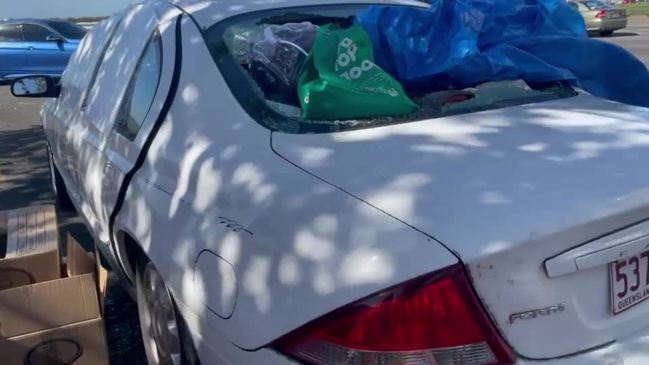
Opinion
Don't miss out on the headlines from Opinion. Followed categories will be added to My News.
THERE are a lot of serious issues with development on the Gold Coast.
The city is running out of land. We are unable to provide enough decent homes for everyone to live in. And too much of what is being built is of dubious quality.
We may also be able to add to that list that our homes are essentially being built back to front.
That’s the intriguing prospect raised by urban planning expert Mike Day - though he doesn’t put it in quite those terms.
Mr Day, a partner in the award-winning Hatch RobertsDay agency, is an exponent of what he calls ‘rediscovering the art of town founding’ and ‘urbanising the burbs’ – replacing low density sprawl, such as we have on the Gold Coast, with medium to high density developments that foster a sense of belonging.
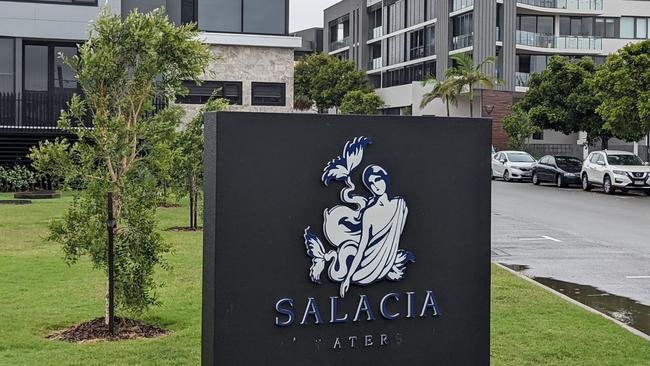
And one of the biggest problems he sees is that cars and garages dominate the front of most newly-built houses.
“What the industry is doing now is they’re collapsing the lot size down from 600 sqm to 300, and what you do is you narrow the frontage down to a 10 or 12 metre frontage and if six metres of that is garage then you’ve only got room for a door and one window,” he told this column.
“So really on the street you are making it as if cars are living there, not people. And the cars are often parked across the driveway, across the footpath.
“It really deters people from walking or cycling, or mum and dad pushing the pram.”
Anyone who has driven around the vast new housing estates in the northern Gold Coast will recognise the problem.
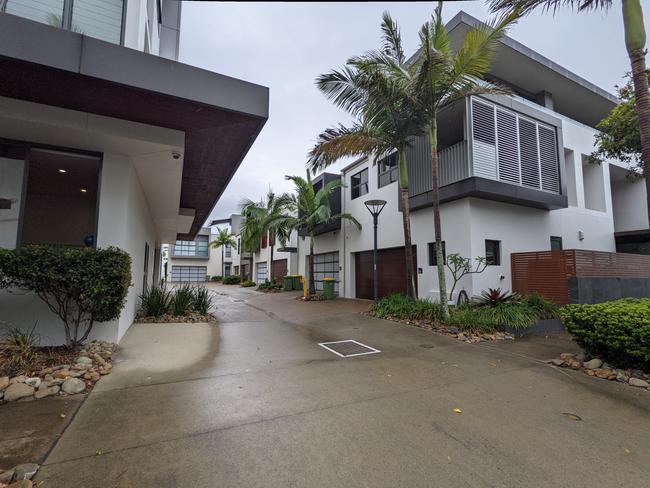
Mr Day would like to see a better form of development, higher density, yes, but not necessarily high rise, and clustered around transport, with essential services such as shops within a comfortable 15-minute stroll of residents.
And cars and garages on back lanes, rather than the front of homes.
“The advantage of putting these cars at the back and accessing them off a small street is that the garage goes at the back, so you’re basically reclaiming the front for pedestrians,” he said.
“Then you can plant more street trees, because you haven’t got the kerb cut and the driveways.
“Normally when you go down a conventional suburban street, all you see is cars and garages.”
Mr Day said the way cities like the Gold Coast are planned makes it impossible for most residents not to become dependent on four wheels.
“As a planning profession, I think we’ve had an obsession with separating all the land uses, so we’ve got office business parks, we’ve got shopping centres, we’ve got residential areas. Everything’s separated,” he said.
“The single residential homes are so dispersed you’ve got to hop in the car and drive everywhere.”
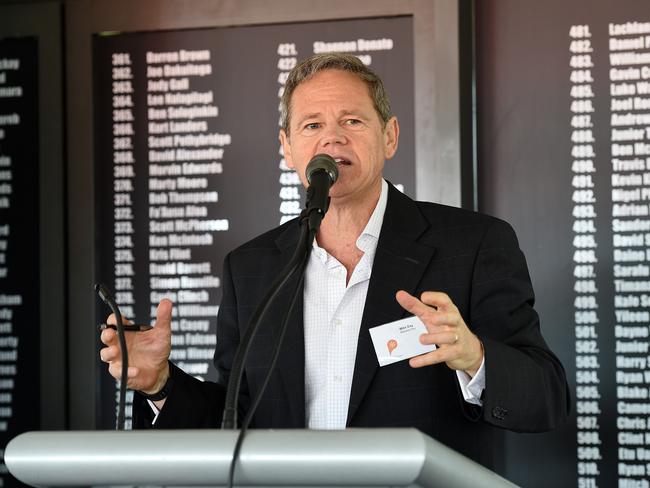
Mr Day has already had the chance to put his ideas into action on the Gold Coast. He was a key part of the project team that designed the first stages of the Salacia Waters development in Paradise Point.
Walking around the development on a rainy Monday morning, it was interesting to see how it worked for residents. An outdoor fitness class was taking place in a shared space shielded from the elements as your columnist strolled by.
There were restaurants, a recreation centre and impressive swimming pool. Visible too, were garages in a back laneway, as Mr Day had described. In stark contrast, the fronts of expensive houses on a neighbouring street were almost all uninviting walls and garage doors.
Mr Day understands why high density has a bad name. He wants to change that.
“We’re always keen to show demonstration projects or three-dimensional images rather than to just talk about high density, because the perception a lot of people have in their minds is walk-up flats,” he said.
“It’s so important to show people what the urban form will be like. It’s a suite of interventions that are needed.
“It’s not just the built form, we need to consider it in context. We need great streets, we need the mixing of the uses.”
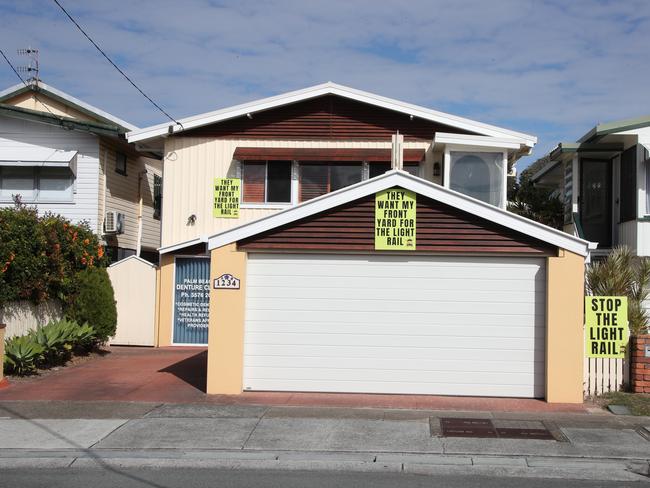
Salacia Waters is an interesting example of what can be achieved.
It’s the sort of development that, if replicated along the light rail line, might help the Gold Coast achieve the density it needs without the kind of monolithic grey boxes that threaten the vibrancy of areas like Palm Beach.
The Bulletin, in our Future Gold Coast series, is taking a close look at the next steps for this city. As our population surges and housing becomes scarce, this city is at a turning point. A moment of truth that will craft our future.
Do we want to keep picking off more of the hinterland for low density, car-dependent communities? Or keep building more unit towers whose lower floors and street frontage are dominated by barely-disguised garage space, like the Sky Broadwater building completed in Southport last year?
Or do we accept the need for higher density in existing suburbs, and instead make a real effort to found communities that will remain viable places to work and live for generations to come?
It may be that our thinking, like our houses, is built the wrong way around.
PREVIOUSLY: BRUTAL FALL-OUT FROM GOLD COAST’S RENTAL CRISIS
They are the Gold Coast’s “hidden homeless”.
Couch surfing and living in cars and tents.
Quietly, desperately, trying to chart a course back to a more stable, normal life.
And they are just like me and you.
The untold story of the Gold Coast’s stunning property boom is the people being left behind. People who have worked all their lives, but suddenly find themselves unable to afford to pay rent.
The Bulletin last week reported that rents have increased by an average of 17.5 per cent across the city in the past 12 months.
The jumps in many of what were previously considered more affordable suburbs were even more extreme. In Labrador, the median rent for a house soared 22 per cent to $650 a week. In Nerang, the cost is up 20.4 per cent to $664.

The plaintive messages on social media are legion. Like the single mum who got a notice to vacate because her landlord is selling, but after many weeks looking, can’t find anything to fit her $500-a-week budget – the most she can afford.
Or the elderly couple, living in their car for more than a year.
Uniting Care runs a number of services for people coping with homelessness on the Gold Coast, including a busy hub in Bilinga. Spokesperson Luke Lindsay says they’ve seen a “sharp increase” in people reaching out for help in the past 12 months as a result of rising housing costs and job losses during the Covid-19 pandemic.
“We are seeing people that 12 months ago we would not have seen,” he said.
“We’re seeing families with kids, we’re seeing couples, people who were working, were employed and able to pay their rent. Mums and dads who have lost employment because they were working in hospitality or retail, or some form of occupation that was impacted by Covid.
“All of a sudden they’re unable to pay their rent, and they’re unable to afford the increases in rent.
“... We’re seeing more and more families that are sleeping rough, sleeping in cars or sleeping in tents at the boat ramps, or couch surfing with family and friends – two nights here, one night here, with the kids in tow.
“So we are seeing a very different demographic.”
Mr Lindsay said that in the past Uniting Care had rented properties to house families in need. But the tight rental market was making the task almost impossible.
“For the landlord that’s good because it’s United Care paying the rent and it’s guaranteed,” he said.
“... But as an organisation, we are one of 50 people turning up to inspections and applying to rent a property.
“So even as an organisation, which for landlords is a pretty safe bet, we are finding it unbelievably difficult to find properties.
“Across the Gold Coast, right now, we are seeking another five properties and we just can’t get them.”
As one would expect, the crisis has also led to huge demand for social and affordable housing on the Gold Coast. The Palaszczuk government is spending $70.4m over four years to provide 260 new social homes.
“This is in addition to the 275 new social homes already commenced on the Gold Coast under our Housing Strategy and 14 through Works for Tradies,” a spokesperson from the Department of Communities, Housing and Digital Economy told the Bulletin.
“This includes a 12-unit complex that has recently commenced construction in Nerang.”

The reality is that, as with everyone involved in the sector, the state government is struggling to keep up with demand. As of 30 June, 3122 Gold Coast households were on the housing register.
The solution for many families, ultimately, is not a pleasant one.
“Unfortunately for a lot of the people, the Gold Coast is just not an option for them, they have to look further afield,” Mr Lindsay said.
“They have to look further inland, western Queensland, Ipswich, Toowoomba, they just have to look beyond the Gold Coast.
“What that means is kids have to switch schools and their local community support network is no longer there for them. The flow-on impact of having to leave what for a lot of people has been their long-term community is really significant.”
It’s shameful that this has to happen. That as a city, we can’t do more for decent, honest people in their hour of need.
There are sliding doors moments in all of our lives that, if the cards had fallen the wrong way, might have put any of us in a similar situation.
That could have seen us couch-surfing or living in cars, like the hundreds of hidden homeless on the Gold Coast.





